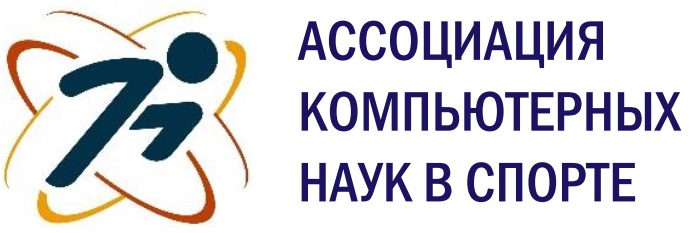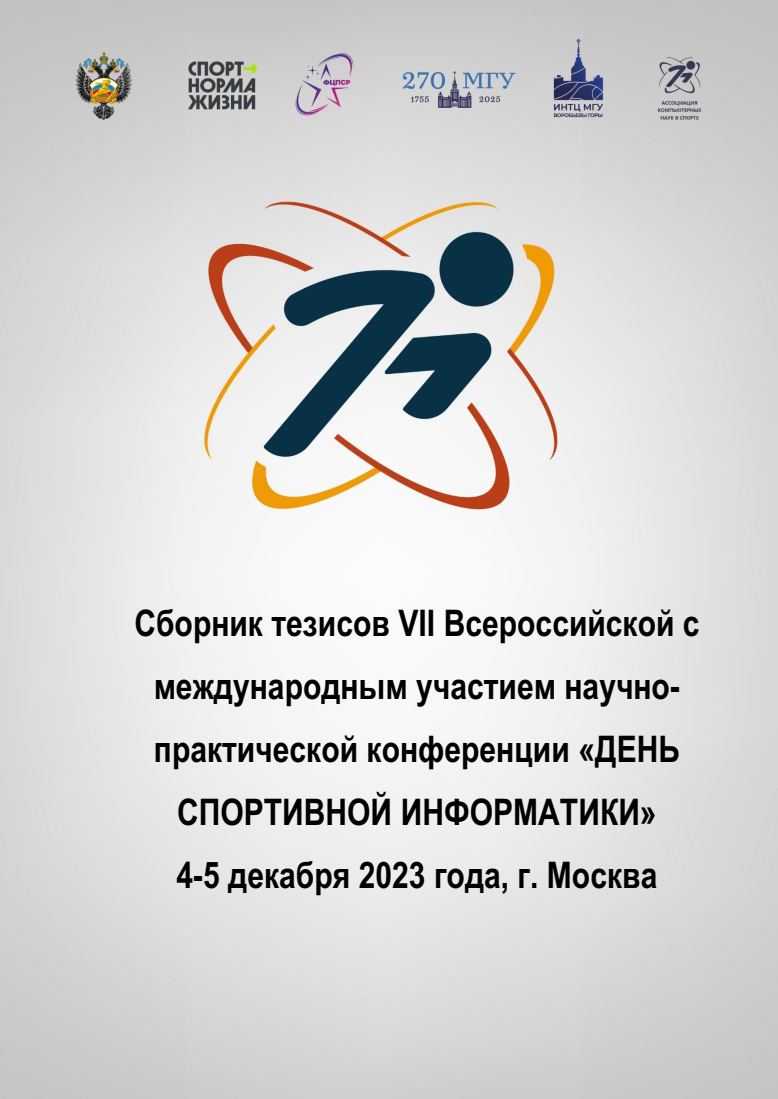VAK Russia 5.8.5
VAK Russia 5.8.6
VAK Russia 5.8.7
VAK Russia 5.2.2
VAK Russia 1.1.10
VAK Russia 1.2.1
VAK Russia 1.2.2
VAK Russia 1.2.3
VAK Russia 1.5.5
VAK Russia 2.2.11
VAK Russia 2.2.12
VAK Russia 2.3.1
VAK Russia 2.3.4
VAK Russia 2.3.8
UDC 004
UDC 796
UDC 796/799
CSCSTI 28.23
CSCSTI 28.17
CSCSTI 28.01
CSCSTI 77.05
CSCSTI 77.29
CSCSTI 77.31
CSCSTI 80.37
CSCSTI 20.53
CSCSTI 20.01
CSCSTI 50.33
CSCSTI 50.41
CSCSTI 30.51
Russian Classification of Professions by Education 02.04.01
Russian Classification of Professions by Education 02.06.01
Russian Classification of Professions by Education 31.08.39
Russian Classification of Professions by Education 49.02.01
Russian Classification of Professions by Education 49.06.01
Russian Classification of Professions by Education 12.02.06
Russian Library and Bibliographic Classification 75
Russian Library and Bibliographic Classification 6539
Russian Library and Bibliographic Classification 73
Russian Library and Bibliographic Classification 606
Russian Trade and Bibliographic Classification 2352
Russian Trade and Bibliographic Classification 4614
Russian Trade and Bibliographic Classification 4618
Russian Trade and Bibliographic Classification 4612
Russian Trade and Bibliographic Classification 2301
Russian Trade and Bibliographic Classification 3015
Russian Trade and Bibliographic Classification 5106
Russian Trade and Bibliographic Classification 518
Russian Trade and Bibliographic Classification 5182
Russian Trade and Bibliographic Classification 5185
Russian Trade and Bibliographic Classification 762
Russian Trade and Bibliographic Classification 7623
BISAC COM059000 Computer Engineering
BISAC COM012000 Computer Graphics
BISAC COM014000 Computer Science
BISAC COM072000 Computer Simulation
BISAC COM017000 Cybernetics
BISAC COM062000 Data Modeling & Design
BISAC COM018000 Data Processing
BISAC COM021030 Databases / Data Mining
BISAC COM071000 Digital Media / Video & Animation
BISAC COM023000 Educational Software
BISAC COM025000 Expert Systems
BISAC COM074000 Hardware / Mobile Devices
BISAC COM032000 Information Technology
BISAC COM077000 Mathematical & Statistical Software
BISAC BUS021000 Econometrics
BISAC GAM001000 Board Games
BISAC GAM016000 Fantasy Sports
BISAC GAM004050 Gambling / Sports
BISAC EDU039000 Computers & Technology
BISAC EDU036000 Organizations & Institutions
BISAC EDU037000 Research
BISAC EDU027000 Statistics
BISAC MED084000 Sports Medicine
BISAC MED078000 Public Health
BISAC MED076000 Preventive Medicine
BISAC HEA046000 Children's Health
BISAC HEA006000 Diet & Nutrition / Diets
BISAC HEA034000 Diet & Nutrition / Food Content Guides
BISAC HEA002000 Aerobics
BISAC HEA017000 Diet & Nutrition / Nutrition
BISAC HEA007000 Exercise
BISAC HEA010000 Healthy Living
BISAC HEA038000 Work-Related Health
BISAC MAT011000 Game Theory
BISAC MAT029030 Probability & Statistics / Regression Analysis
BISAC MAT025000 Recreations & Games
BISAC SPO003000 Baseball / General
BISAC SPO068000 Business Aspects
BISAC SPO077000 Children’s & Youth Sports
BISAC SPO061020 Coaching / Football
BISAC SPO061030 Coaching / Soccer
BISAC SPO011000 Cycling
BISAC SPO063000 Equipment & Supplies
BISAC SPO073000 Field Hockey
BISAC SPO015000 Football
BISAC SPO016000 Golf
BISAC SPO075000 Health & Safety
BISAC SPO024000 Juggling
BISAC SPO040000 Soccer
BISAC SPO066000 Sociology of Sports
BISAC SPO047000 Training
BISAC SPO051000 Water Sports
BISAC PSY012000 Education & Training
BISAC PSY042000 Assessment, Testing & Measurement
IIn all sports, where a successful result is achieved by obtaining high projectile speeds when interacting with an athlete, shock and vibration loads occur. The study of issues arising in the vibrational biomechanics of sports equipment will always be an urgent and in-demand area in sports scientific engineering. Based on high innovative technologies, including those related to the processes of transmission, analysis and evaluation of information using computer technology, it is convenient to obtain the vibration characteristics of projectiles in various situations using test benches. Shock, vibration stands, as well as field tests for recording dynamic characteristics (bending, torsional vibrations) of various models of sports equipment will be constantly improved. On laboratory test benches, both the velocity of the projectile and the rate of damping of the resulting vibrations are determined, the analysis of vibration attenuation decrements and other dynamic characteristics affecting the quality of the sports projectile and having a significant impact on the result obtained by the athlete. The analysis of information data records obtained from vibration sensors with the construction of amplitude-frequency characteristics, based on the test results, allows us to determine both the most high-speed sports equipment, both a biomechanical system, and a projectile with reduced vibrations and the best vibration damping properties. Information, digital and all other technologies, including those related to the development of innovative composite materials, continue to develop, the study of vibrational biomechanics of sports equipment will also continue to develop and play an important role in the development of increasingly advanced sports equipment that will further push the boundaries of human capabilities.
vibrational biomechanics, test bench, projectile velocity, vibration damping
1. Lubyako A.A., Rusia A.G., Solovyova E.M., Tolstov Yu.S. Vibration load in high-speed winter sports (downhill, ski cross, bobsleigh). Medicina ekstremal'nyh situacij [Medicine of extreme situations], 2015, No 2 (52), pp. 44-52 (in Russian).
2. Minaev A.Ya. Experimental studies of shock interactions and arising vibrations in elastically deformable biomechanical systems ‘athlete-inventory’. In: Biomechanics of motor actions and biomechanical control in sports. Materials of the II All-Russian scientific and practical conference with international participation. Moscow, Moscow State Academy of Physical Culture, 2014, pp. 64-71 (in Russian).







